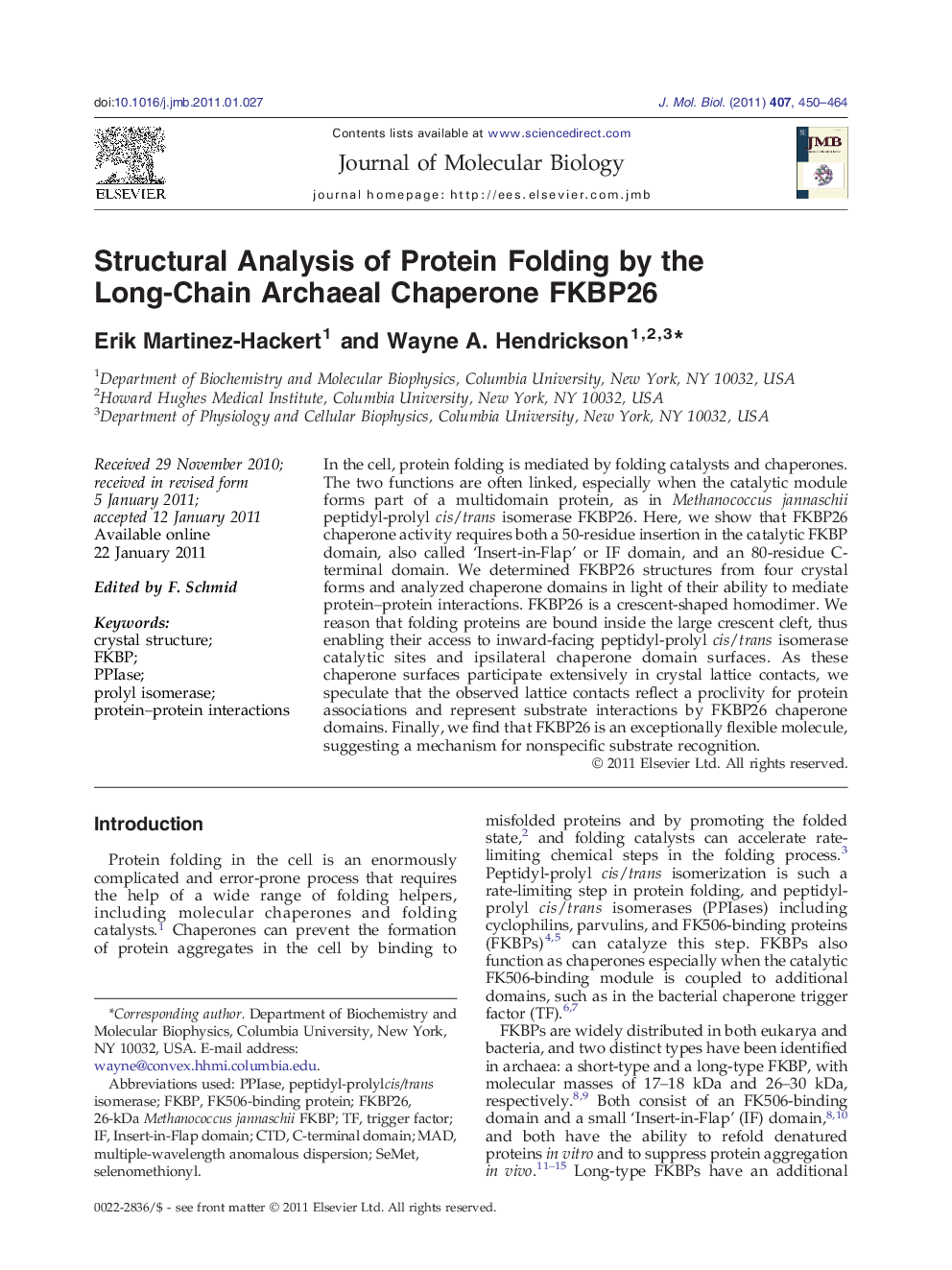| Article ID | Journal | Published Year | Pages | File Type |
|---|---|---|---|---|
| 2185239 | Journal of Molecular Biology | 2011 | 15 Pages |
In the cell, protein folding is mediated by folding catalysts and chaperones. The two functions are often linked, especially when the catalytic module forms part of a multidomain protein, as in Methanococcus jannaschii peptidyl-prolyl cis/trans isomerase FKBP26. Here, we show that FKBP26 chaperone activity requires both a 50-residue insertion in the catalytic FKBP domain, also called ‘Insert-in-Flap’ or IF domain, and an 80-residue C-terminal domain. We determined FKBP26 structures from four crystal forms and analyzed chaperone domains in light of their ability to mediate protein–protein interactions. FKBP26 is a crescent-shaped homodimer. We reason that folding proteins are bound inside the large crescent cleft, thus enabling their access to inward-facing peptidyl-prolyl cis/trans isomerase catalytic sites and ipsilateral chaperone domain surfaces. As these chaperone surfaces participate extensively in crystal lattice contacts, we speculate that the observed lattice contacts reflect a proclivity for protein associations and represent substrate interactions by FKBP26 chaperone domains. Finally, we find that FKBP26 is an exceptionally flexible molecule, suggesting a mechanism for nonspecific substrate recognition.
